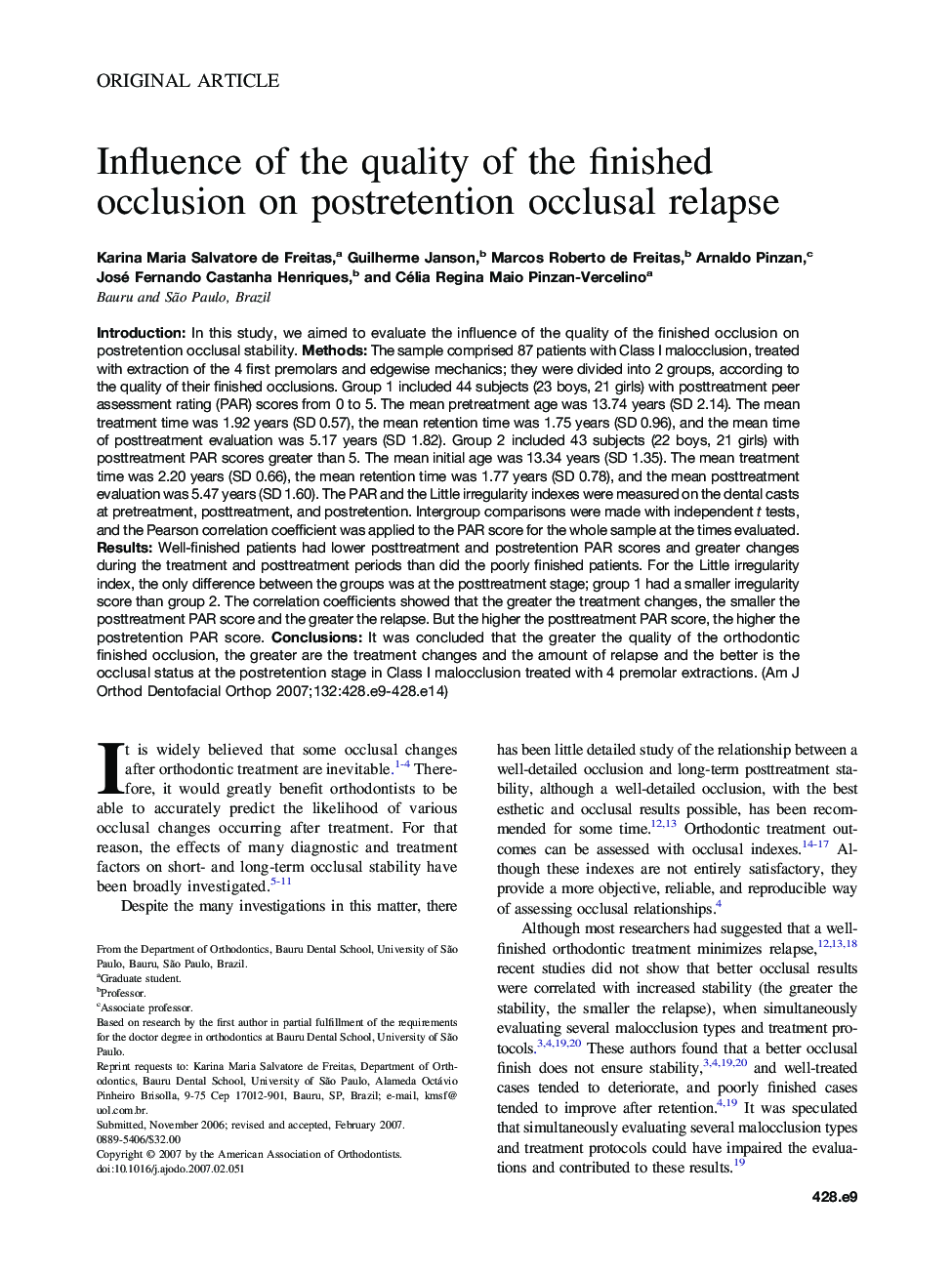| Article ID | Journal | Published Year | Pages | File Type |
|---|---|---|---|---|
| 3119791 | American Journal of Orthodontics and Dentofacial Orthopedics | 2007 | 6 Pages |
Abstract
Introduction: In this study, we aimed to evaluate the influence of the quality of the finished occlusion on postretention occlusal stability. Methods: The sample comprised 87 patients with Class I malocclusion, treated with extraction of the 4 first premolars and edgewise mechanics; they were divided into 2 groups, according to the quality of their finished occlusions. Group 1 included 44 subjects (23 boys, 21 girls) with posttreatment peer assessment rating (PAR) scores from 0 to 5. The mean pretreatment age was 13.74 years (SD 2.14). The mean treatment time was 1.92 years (SD 0.57), the mean retention time was 1.75 years (SD 0.96), and the mean time of posttreatment evaluation was 5.17 years (SD 1.82). Group 2 included 43 subjects (22 boys, 21 girls) with posttreatment PAR scores greater than 5. The mean initial age was 13.34 years (SD 1.35). The mean treatment time was 2.20 years (SD 0.66), the mean retention time was 1.77 years (SD 0.78), and the mean posttreatment evaluation was 5.47 years (SD 1.60). The PAR and the Little irregularity indexes were measured on the dental casts at pretreatment, posttreatment, and postretention. Intergroup comparisons were made with independent t tests, and the Pearson correlation coefficient was applied to the PAR score for the whole sample at the times evaluated. Results: Well-finished patients had lower posttreatment and postretention PAR scores and greater changes during the treatment and posttreatment periods than did the poorly finished patients. For the Little irregularity index, the only difference between the groups was at the posttreatment stage; group 1 had a smaller irregularity score than group 2. The correlation coefficients showed that the greater the treatment changes, the smaller the posttreatment PAR score and the greater the relapse. But the higher the posttreatment PAR score, the higher the postretention PAR score. Conclusions: It was concluded that the greater the quality of the orthodontic finished occlusion, the greater are the treatment changes and the amount of relapse and the better is the occlusal status at the postretention stage in Class I malocclusion treated with 4 premolar extractions.
Related Topics
Health Sciences
Medicine and Dentistry
Dentistry, Oral Surgery and Medicine
Authors
Karina Maria Salvatore de Freitas, Guilherme Janson, Marcos Roberto de Freitas, Arnaldo Pinzan, José Fernando Castanha Henriques, Célia Regina Maio Pinzan-Vercelino,
